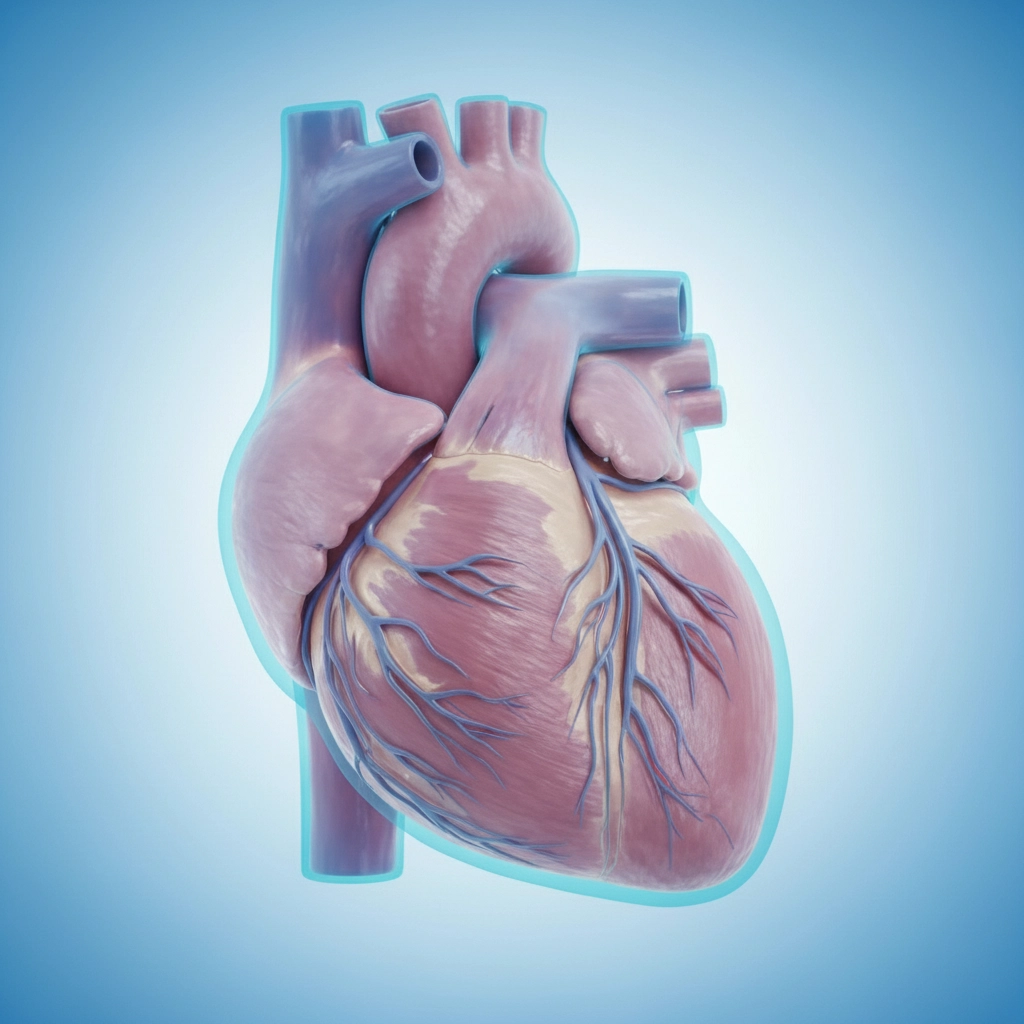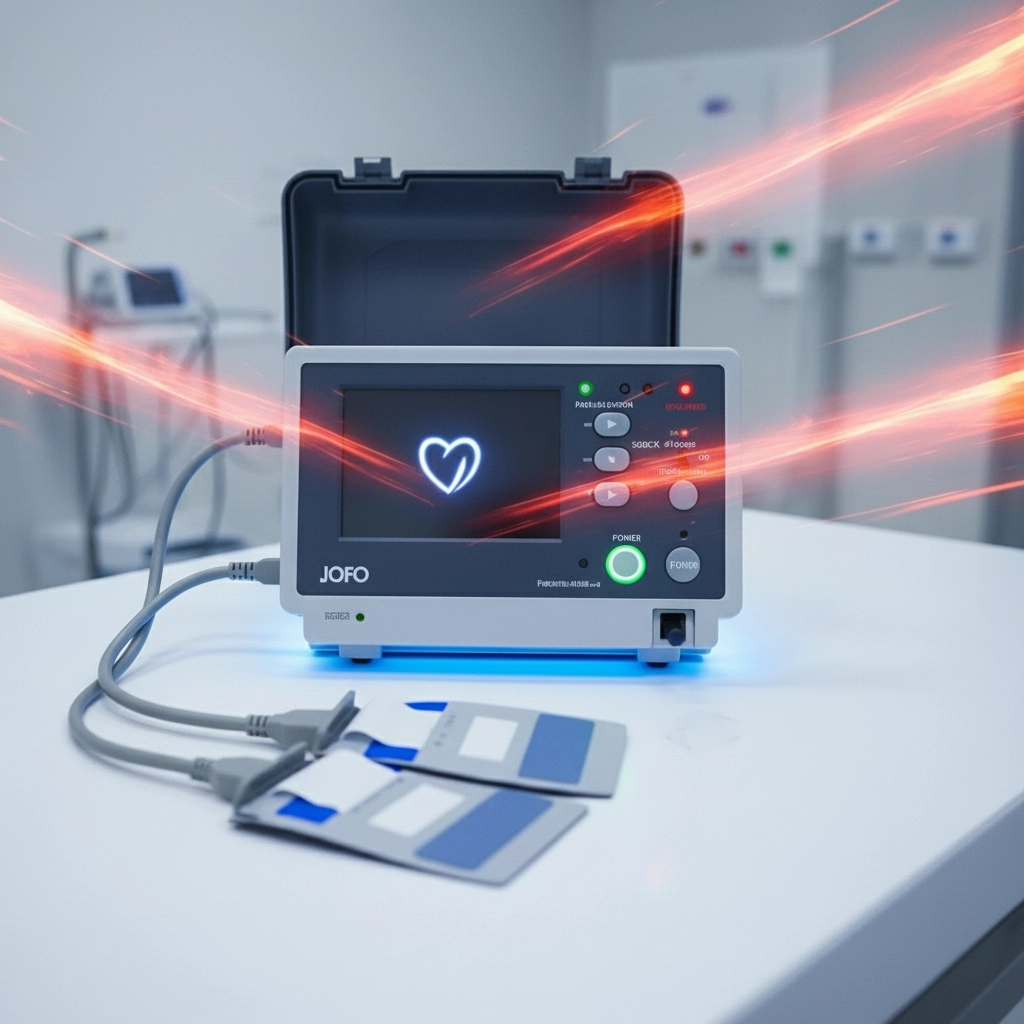
Ventricular fibrillation is a critical heart condition that requires immediate attention. It occurs when the heart’s ventricles contract chaotically, disrupting blood flow and threatening life. Understanding the causes, symptoms, and treatments of this condition is essential for saving lives. From identifying risk factors, such as coronary artery disease, to recognizing tell-tale signs like palpitations or fainting, every detail matters. In this article, we will delve into the heart of this medical emergency, exploring the underlying mechanisms and available treatment options. Equipped with the right information, we can not only better prepare for this emergency but also raise awareness among those around us. Knowledge is a powerful ally in the fight against ventricular fibrillation. Get ready to discover key elements that could make a difference during a heart crisis.
What is ventricular fibrillation?

Ventricular fibrillation is an extremely serious medical condition that affects the heart. It is characterized by rapid and irregular contractions of the ventricles, the lower chambers of the heart, rendering the pumping of blood ineffective. Unlike normal and coordinated contractions, in ventricular fibrillation, the heart quivers chaotically, leading to a dramatic drop in blood pressure and interrupting the supply of blood to vital organs, including the brain.
When a person experiences ventricular fibrillation, they can quickly lose consciousness and collapse. If not treated immediately, this condition can be fatal within minutes. In fact, ventricular fibrillation is one of the leading causes of sudden cardiac death. Without prompt intervention, the chances of survival decrease by 10% with each minute following cardiac arrest. This medical emergency requires an immediate and effective response to save the patient’s life.
Ventricular fibrillation is often confused with other types of arrhythmias but is distinguished by its potentially fatal nature and sudden onset. A deep understanding of this condition is crucial not only for healthcare professionals but also for the general public. By recognizing the signs and knowing what steps to take, anyone can contribute to a rapid response that could save lives.
Causes of Ventricular Fibrillation

The causes of ventricular fibrillation can be varied and complex. One of the main causes is coronary artery disease, a condition where the arteries supplying blood to the heart are blocked by fatty deposits. This blockage can reduce the blood flow to the heart muscle, leading to ischemia, a condition where part of the heart doesn’t receive enough oxygen. When this happens, the heart tissue can become irritated and trigger severe arrhythmias, including ventricular fibrillation.
Another common cause is myocardial infarction, more commonly known as a heart attack. During a heart attack, blood flow to a part of the heart muscle is suddenly stopped, usually due to a blood clot. This interruption in blood flow can damage heart tissue and cause electrical disturbances, leading to ventricular fibrillation. Individuals who have previously experienced a heart attack are at a higher risk of developing this life-threatening arrhythmia.
Structural abnormalities in the heart, such as cardiomyopathies, can also cause ventricular fibrillation. These conditions affect the structure and function of the heart muscle, creating an environment that promotes arrhythmias. Other factors include electrolyte imbalances, such as abnormal potassium or magnesium levels in the blood, as well as the use of certain medications or drugs. By identifying and understanding these causes, it becomes possible to implement effective prevention strategies to reduce the risks.
Symptoms of Ventricular Fibrillation

The symptoms of ventricular fibrillation are often sudden and severe, requiring immediate medical attention. One of the most obvious signs is fainting or loss of consciousness. This happens because the heart is no longer able to pump blood effectively, leading to a rapid decrease in blood supply to the brain. As a result, the person may collapse without warning.
Before fainting, some people may experience heart palpitations, a sensation of rapid or irregular heartbeats. These palpitations can be accompanied by chest pain, shortness of breath, and dizziness. These symptoms can be very alarming and require immediate medical evaluation to determine the underlying cause and administer appropriate treatment. It is crucial not to ignore these warning signs, as they can precede a cardiac arrest.
In some cases, ventricular fibrillation can occur without any prior symptoms, making the condition even more dangerous. This is why it is essential to know the risk factors and warning signs, even if they seem minor. Regular monitoring of heart health, especially in at-risk individuals, can help detect abnormalities at an early stage and prevent serious complications.
Associated Risk Factors
The risk factors associated with ventricular fibrillation are numerous and vary from person to person. Advanced age is a significant risk factor, as blood vessels can become stiffer and more likely to clog over time. Additionally, older adults are more likely to suffer from heart disease and other chronic conditions that increase the risk of ventricular fibrillation.
A family history of heart disease also plays an important role. If a close family member has suffered from heart problems, the risk of developing similar conditions is higher. This is due to a combination of genetic and environmental factors. People with a family history of heart disease should be particularly vigilant about their heart health and consult a doctor regularly.
Lifestyle is another major risk factor. Smoking, a diet high in saturated fats and cholesterol, and a lack of physical exercise can all contribute to the development of coronary artery disease and increase the risk of ventricular fibrillation. Stress management is also crucial, as chronic stress can affect heart health. By adopting a healthy lifestyle, exercising regularly, eating a balanced diet, and avoiding harmful substances, it is possible to significantly reduce the risks.
Diagnosing Ventricular Fibrillation

The diagnosis of ventricular fibrillation is typically performed as an emergency, as this condition requires immediate medical intervention. When a patient arrives at the emergency room with symptoms of cardiac arrest, doctors quickly conduct an evaluation to confirm the presence of ventricular fibrillation. An electrocardiogram (ECG) is the primary diagnostic tool used in these situations. The ECG records the electrical activity of the heart and can reveal characteristic patterns of ventricular fibrillation, such as chaotic and irregular waves.
In addition to the ECG, other tests may be performed to assess heart function and identify the underlying causes of ventricular fibrillation. An echocardiogram, which uses ultrasound to produce images of the heart, can help detect structural abnormalities or damage to the heart muscle. Blood tests may also be conducted to check electrolyte levels, markers of myocardial infarction, and other indicators of heart health.
In some cases, more advanced tests, such as coronary angiography, may be required. This test uses X-rays to visualize the coronary arteries and detect blockages or narrowings that could cause ischemia. Once the diagnosis is confirmed, doctors can develop an appropriate treatment plan to stabilize the patient and prevent future episodes of ventricular fibrillation.
Available Treatments for Ventricular Fibrillation

Immediate Treatment of Ventricular Fibrillation
Immediate treatment of ventricular fibrillation is critical to saving the patient’s life. Defibrillation is the first line of treatment and should be performed as quickly as possible. It involves delivering an electric shock to the heart using an automated external defibrillator (AED) or a manual defibrillator. This electric shock resets the heart’s rhythm and restores normal electrical activity. Defibrillation is most effective when performed within the first few minutes of cardiac arrest, underscoring the importance of having AEDs available in public places.
Beyond defibrillation, advanced cardiac care may include administering medication to support heart function and improve survival chances. Drugs like epinephrine and amiodarone can stabilize the heart rhythm and prevent future episodes of ventricular fibrillation. Once the patient is stabilized, they can be transferred to a hospital for further evaluation and additional treatments.
In the long term, medical interventions may be necessary to prevent recurring ventricular fibrillation. Implantable cardioverter-defibrillators (ICDs) may be recommended for certain patients. These devices continuously monitor the heart’s rhythm and can deliver a shock if a life-threatening arrhythmia is detected. Other treatments may include surgery to correct structural abnormalities in the heart or catheter ablation to destroy abnormal heart tissue triggering arrhythmias. Managing risk factors through lifestyle changes and addressing underlying medical conditions is also essential for preventing future episodes.
Preventing Ventricular Fibrillation
Preventing ventricular fibrillation involves strategies to reduce risk factors and promote heart health. Adopting a healthy lifestyle is one of the most effective measures, including a balanced diet rich in fruits, vegetables, whole grains, and low in saturated fats and cholesterol. Regular physical activity, such as walking, swimming, or cycling, helps improve heart health and lowers the risk of cardiovascular disease.
Avoiding smoking and limiting alcohol consumption are also critical steps. Smoking damages blood vessels and increases the risk of coronary heart disease, while excessive alcohol intake can cause arrhythmias and other heart issues. Managing stress is equally important, as chronic stress can negatively impact the heart. Relaxation techniques, such as meditation, yoga, or deep breathing, can help reduce stress and improve overall health.
People with a family history of heart disease or other risk factors should regularly consult a doctor for health checkups. Routine screenings can detect abnormalities early and allow for preventive interventions. Addressing underlying medical conditions like hypertension, diabetes, and high cholesterol is also essential to preventing ventricular fibrillation. Following these preventive measures can significantly reduce the risk of this potentially fatal condition.
The Importance of Rapid Intervention
The importance of rapid intervention in ventricular fibrillation cannot be overstated. Every minute counts when the heart stops pumping blood effectively. The speed at which someone receives CPR and defibrillation can determine the outcome. Survival chances drop exponentially with each passing minute without intervention, highlighting the need for an immediate response.
Training the public in CPR and AED use is critical for improving survival rates. AEDs are designed to be used by untrained individuals, providing step-by-step guidance during defibrillation. Their presence in public spaces, such as malls, airports, and schools, can make a significant difference in cardiac emergencies. Raising awareness and educating people about these devices can save lives and create safer communities.
Healthcare professionals, including emergency physicians, paramedics, and firefighters, play a vital role in the quick response to ventricular fibrillation. Their training and expertise are crucial for providing necessary emergency care. However, the first line of defense often involves bystanders or family members who can start CPR and use an AED before emergency services arrive. By understanding the importance of rapid intervention and being prepared to act, everyone can contribute to saving lives.
Survivor Stories and Testimonials
Stories from survivors of ventricular fibrillation provide invaluable insights into the importance of quick intervention and human resilience. These testimonials can inspire and educate, showing how lives can be saved through rapid actions and the availability of resuscitation devices. Take, for example, John, a 55-year-old man who experienced ventricular fibrillation while jogging in a park. Thanks to the quick intervention of a passerby trained in CPR and the use of a nearby AED, John was resuscitated and transported to the hospital for further care.
Another powerful story is that of Mary, a 38-year-old mother who felt palpitations and chest pain before collapsing at home. Her husband, who had recently taken a CPR course, immediately began chest compressions and called emergency services. Paramedics arrived within minutes and used a defibrillator to restore Mary’s heart rhythm. Thanks to this swift action, Mary was able to return to her normal life after a period of rehabilitation.
These stories emphasize not only the necessity of quick intervention but also the importance of public training and preparedness. They highlight the critical role of AEDs and CPR in helping ventricular fibrillation patients survive. By sharing these stories, we can encourage more people to get trained and be ready to act in a cardiac emergency, ultimately saving more lives.
Conclusion and Call to Action for Awareness
Ventricular fibrillation is a medical emergency requiring immediate and effective response. Understanding the causes, symptoms, and treatments of this condition is crucial for saving lives. From identifying risk factors to the importance of rapid intervention, every element plays a key role in managing this potentially fatal arrhythmia. Survivor stories demonstrate the life-saving difference that a fast and informed response can make.
We all have a role to play in raising awareness about ventricular fibrillation and the importance of first aid. By learning CPR and how to use an AED, anyone can become a vital link in the chain of survival. Communities can also work together to increase the availability of AEDs in public spaces and provide regular first aid training.
Ultimately, knowledge and preparation are our best allies in the fight against ventricular fibrillation. By spreading awareness and promoting preventive actions, we can save lives and reduce the impact of this critical heart condition. Let’s be proactive and committed to awareness and training, because every second matters, and every life is precious.

